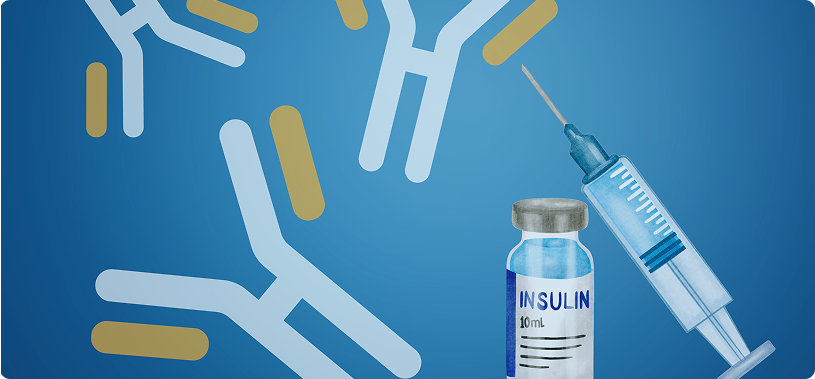
High-Quality Characterisation Services to Support Biosimilarity Confidence
Proteomics International delivers immediate, independent, and cost-effective support for biosimilar developers, providing high-quality data packs designed to meet global regulatory standards including FDA and ICH Q6B guidelines.
Our biosimilar characterisation services support critical stages of biosimilarity assessment. Focused on delivering high-confidence data to meet regulatory expectations, we assist clients from early comparability studies through to submission-ready analytical packages.
As a leader in biologics drug characterisation, Proteomics International operates a world-class, ISO/IEC 17025:2005 accredited protein analysis laboratory—offering the highest standard of analytical quality and regulatory compliance. With a proven track record in biosimilar testing, we are the trusted partner of choice for biopharma companies worldwide.
Why ISO/IEC 17025 Matters:
ISO/IEC 17025 is the internationally recognised standard for testing and calibration laboratories. It shares the same quality assurance objectives as Good Laboratory Practice (GLP) and is the most widely used accreditation standard for Federal testing laboratories in the USA, ensuring the reliability and regulatory acceptance of your biosimilar data.
Streamlined EMA guidelines pave the way for faster, cost-effective biosimilar development—our testing services help you stay ahead. Click here to read
Projects successfully undertaken include:
- Insulin/Insulin lispro/Insulin glargine
- Epidermal growth factor (EGF)
- Rituximab (Zytux)/MabThera
- Ustekinumab (Stelara)
- Trastuzumab (Herceptin)
- Omalizumab
- Adalimumab
- Icatibant acetate
- Human growth hormone (HGH)
- Granulocyte-colony stimulating factor (G-CSF)
- Human follicle stimulating hormone (h-FSH)
- Recombinant coagulation factor VII
- Immunoglobulin (IgG) Fab fragment & whole molecule
- Eptifibatide (cyclic peptide)
- Lactoferrin
- Protamine Sulfate
- Semaglutide
Services include:
- Intact mass
- Peptide mapping for comprehensive protein sequence coverage
- Disulphide bridge analysis
- N-terminal and C-terminal protein sequencing by mass spectrometry
- Amino acid analysis including Cys & Trp determination
- Extinction coefficient determination
- Post-translational modifications including oxidation and phosphorylation
- Stability testing and stress analyses
- Fluorescence spectra analysis
- Glycomics/carbohydrate analyses including N- & O-glycan analysis and monosaccharide analysis
- AUC analysis
- CD analysis
- X-ray crystallography
- 1D SDS-PAGE
- Disulphide bridge analysis – 2-tag technology
- Iso-Aspartate quantification analysis
- N-terminal pyroglutamination relative quantitation analysis
- C-terminal lysine truncated peptide quantification analysis
Download Biosimilar Testing Brochure
Mass Spectrometry (MS) Analysis of Intact Proteins and Peptides
Suitable for pure samples, this service provides a molecular mass for the protein or peptide of interest. Samples are processed intact (no enzyme digestion) using LC/MS.
Disulphide Bridge Analysis
This technique is used to characterise disulphide folding pattern, ie an analysis of which Cys residues are linked.
Scope of work
- Confirmation of protein by MS. Unambiguous identification is provided using our standard MS/MS sequencing service.
- Identification of location of disulphide bonds. Full protein characterisation will be performed using our high-end ESI-MS instruments. The analysis will look for disulphide bonded peptide fragments following enzyme digestion of the protein.
For analysis we require the full theoretical protein sequence, and postulated S-S bridging patterns.
Peptide Mapping Analysis
A standard technique to confirm the amino acid sequence of a molecule, Peptide Mapping Analysis uses multiple enzyme digest strategy to break apart a protein into smaller peptide fragments which are subsequently analysed on the mass spectrometer.
Peptide fragments digested with different enzymes will highly likely provide overlapping amino acid sequence data, allowing for the accurate determination and confirmation of the amino acid sequence of the full length of a target protein molecule.
An added value of Peptide Mapping Analysis is that modifications such as C-terminal truncations and/or N-terminal modifications may also be detected.
N- & C-Terminal Analysis
Using mass spectrometry, we are able to determine a protein’s amino acid sequence at the N-terminus. Mass spectrometry can also be used to identify the amino acid sequence of N-terminally blocked proteins, where traditional N-terminal Edman sequencing fails.
Using our heavy water labeling strategy, we can determine the amino acids at a protein’s C-terminus. Using the correct enzyme during protein digestion in heavy water, we are able to confirm the protein’s C-terminus and any truncated forms
Glycosylation
Comprehensive glycoprotein characterisation at the monosaccharride level is now available to complement existing detailed mapping of the amino acid sequence. Glycosylation analysis is ideal for Quality Control of Biosimilars, recombinant/fusion proteins and antibodies, and is a key component of the ICH Q6B guidelines for molecular characterisation.
Weak Cation Exchange Analysis
PTM modification can affect protein function. Impurities of proteins due to formation of charged PTM(s) can be compared using a specialised chromatographic technique called weak cation exchange analysis. This UV-HPLC based technique separates the proteins and their impurities by taking advantage of their different charge states and provides relative quantification of the impurities
Special Services:
Disulphide bridge analysis – 2-tag technology
Typical disulphide bond analysis only provides confirmation of the existence of theoretical disulphides that are known to exist in the antibody. PI’s patented 2-tag technology can provide relative quantification of disulphide bonded (oxidised) cysteines vs. non-disulphide bonded (reduced) cysteines. This method provides more precise information on efficiency of manufacturing process with respect to the tertiary structure of antibodies.
Iso-Aspartate quantification analysis
Iso-Aspartate is often an unwanted PTM that can occur in proteins. Iso-Aspartic acid residues can result from gradual non-enzymatic deamidation of asparagine or rearrangement of aspartic acid residues during storage or handling. This can affect the specificity and binding of antibody to antigen and for proteins may affect their enzymic activity. Using the power of a unique quantitative kit and UV-HPLC, Iso-Aspartate levels can be quantitated based on the amount of protein provided by PI’s new isoquant assay methodology.
N-terminal pyroglutamination relative quantitation analysis
Pyroglutamination of the N-terminal of heavy chain in antibodies often occurs as a result of manufacturing and handling process. This can be relatively quantified with PI’s new mass spectrometry-based technique.
C-terminal lysine truncated peptide quantification analysis
C-terminals of heavy chain in antibodies often have a variable modification of lysine truncation as an artefact of manufacturing. This C-terminal lysine truncation can be quantified using PI’s new mass spectrometry-based C-terminal analysis method.
